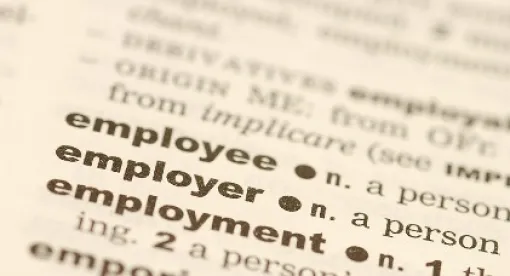The Board overturned Browning-Ferris Industries, 362 NLRB No. 186 (2015), in Hy-Brand Industrial Contractors, Ltd., 365 NLRB No. 156 (Dec. 14, 2017), and returned to the more employer-friendly principles governing joint-employer status that existed prior to that decision. Now, however, the five individual Charging Parties in Hy-Brand have filed with the Board a Motion for Reconsideration of its decision. (Browning-Ferris was appealed to the U.S. Court of Appeals for the D.C. Circuit and, pursuant to a motion by the General Counsel, was remanded on December 22, 2017, to the Board for review in light of Hy-Brand.)
Administrative Law Judge Robert A. Ringler found the Charging Parties, former employees, had been terminated in violation of the National Labor Relations Act, and that Hy-Brand and Brandt Construction Co. were single employers and joint employers (using the Browning-Ferris (362 NLRB 186 [2015]) test created by the Obama Board) responsible for the unlawful terminations. Although, on appeal, the Board reversed Browning-Ferris, it found that, even under the Board’s new joint employer analysis, Hy-Brand and Brandt were joint employers responsible for the illegal terminations. Given that finding, the Board concluded it was unnecessary to also decide the single employer issue.
In their motion for reconsideration, the Charging Parties took issue with the Board’s failure to decide the single-employer issue, and asked the Board to strike from its decision references to Browning-Ferris and joint employer status. They argued that, in failing to affirm the single-employer finding, the Board granted the employers, who violated the NLRA, “a potential avenue to escape liability for future damages.” They also objected to the “Board’s use of the Respondent’s unfair labor practice as a vehicle to overturn Browning-Ferris … and thereby to deprive other workers of meaningful protections and effective bargaining.”
The Charging Parties also requested that Board Member William Emanuel recuse himself from participating in the reconsideration because of his “clear conflict of interest” in Browning-Ferris. Emanuel was a shareholder of the law firm that represented the employers in Browning-Ferris.
On January 25, 2018, Counsel for the General Counsel filed a response to the motion, surprisingly taking “no position on” the motion. Then, on January 30, 2018, Teamsters Local 350, the charging party in Browning-Ferris, filed with the Board a Motion to Intervene in the Hy-Brand proceeding to support the Charging Parties’ Motion for Reconsideration. Teamsters Local 350 argues that it has been severely prejudiced by the Board’s failure to give it notice that it was considering overruling Browning-Ferris in Hy-Brand because, in Hy-Brand, the NLRB discussed and expressed a negative opinion about the facts in Browning-Ferris (particularly those involving the “cost-plus” arrangement in the contract between Browning-Ferris and Leadpoint, the supplier employer). According to Teamsters Local 350, this negative discussion in light of Hy-Brand inevitably means that, on remand, the Board will rule against it. Teamsters Local 350 thus contends that it will be severely prejudiced in the litigation of its own case before the Board if it is not allowed to participate in the motion for reconsideration of Hy-Brand.
Teamsters 350 also argues that neither the General Counsel nor the Charging Parties in Hy-Brand can adequately protect its interests. Regarding the General Counsel, Teamsters Local 350 points to the General Counsel’s failure to support the Charging Parties’ Motion for Reconsideration in Hy-Brand and that the General Counsel has acted contrary to its interests in the Browning-Ferris proceeding by moving to remand the case to the Board and opposing its motion to reconsider the remand. Teamsters Local 350 also contends that the Charging Parties in Hy-Brand lack the resources and intimate knowledge of the record in Browning-Ferris to fully protect its interests.
The motion is now before the Board for consideration. The Board had five members and a 3-2 Republican majority when Hy-Brand was decided. Now, the Board is evenly split: two Republicans and two Democrats. (Republican Member Philip Miscimarra’s term expired on December 16.) Adjudication of the motion likely will wait until a fifth member is confirmed by the Senate. President Donald Trump has nominated John Ring, a Republican, to fill the vacant Board seat.






 />i
/>i

